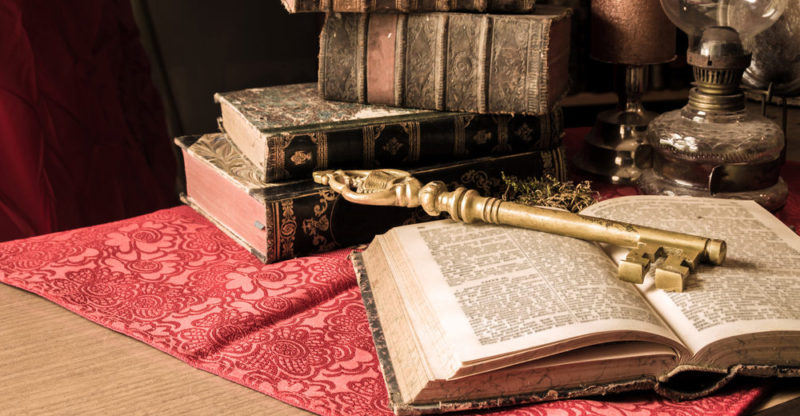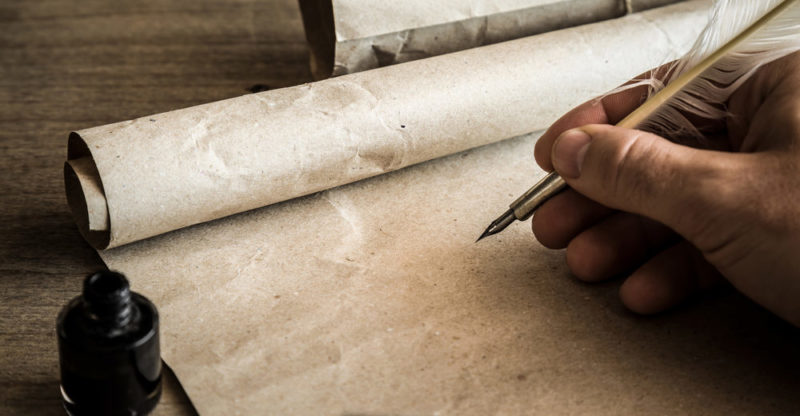We explain what medieval literature is, the stages into which it is divided and languages. Also, what are its characteristics, traditions and authors.
What is medieval literature?
Medieval literature is all written during the Middle Ages , ie the Western historical period from the fall of the Roman Empire of the West in 476 and the arrival of Columbus to America in 1492.
For a long time it was thought that the Middle Ages was a dark age period and practically devoid of artistic manifestations that did not obey the dominant religious thought . This is because the Church as an institution became the protector of European knowledge, protecting books and works of art from barbarian invasions, but then controlling people's access to reading and books.
However, later studies have shown that there is much more than Christian literature , although it is what predominates in the authors of the time.
Characteristics of medieval literature :
Stages
From a literary point of view, medieval literature can be divided into two stages:
- Medieval stage. It covers the first texts of this stage, in which romance and minstrel verses predominate, with a marked influence of the popular and rural, and their religious counterpart, such as sacramental acts and theological treatises.
- Pre-Renaissance stage. As its name indicates, it is the late medieval stage, just before the Renaissance , characterized by the consolidation of the bourgeoisie and its new ways of conceiving society and the world.
-
Anonymity
 Many of the literary works of the Middle Ages lacked a defined author, especially those of the popular court , transmitted orally from one minstrel or bard to another. This also attends to the very low literacy rates that characterized the society of this time, in which the letter was reserved for the clergy.
Many of the literary works of the Middle Ages lacked a defined author, especially those of the popular court , transmitted orally from one minstrel or bard to another. This also attends to the very low literacy rates that characterized the society of this time, in which the letter was reserved for the clergy.Similarly, many works of a more daring or transgressive character , written by the monks and priests themselves, remained anonymous to avoid persecution by the Catholic Inquisition .
Didacticism and moral
Due to the strong influence on the social control of religion in the societies of the time, literature was required to be a vehicle for the moral, ethical and didactic content of Christianity , which is why it was often an exemplary literature, controlled. Such is the case of Christian bestiaries, in which imaginary properties were attributed to animals according to the moral judgment made of them by the religious imaginary.
However, many other works escaped from this bias , taking up Latin or pagan traditions and recreating them more freely. The problem is that many of these works were not written and there was no good way to preserve them.
-
The knights errant
 Chivalric literature entered the Middle Ages, as a form of fiction in which Christian values and symbols converged with the pagan fantasy imaginary, often represented in monstrous and villainous forms. The epic of the Christian knight defeating pagan monsters and imposing religious truth with his sword was a very common tale throughout this period.
Chivalric literature entered the Middle Ages, as a form of fiction in which Christian values and symbols converged with the pagan fantasy imaginary, often represented in monstrous and villainous forms. The epic of the Christian knight defeating pagan monsters and imposing religious truth with his sword was a very common tale throughout this period.
Tongue

Initially, literature was written in Latin , the language in which the mass was dictated and religious texts were transmitted. However, towards the late Middle Ages, texts written in national languages predominate, serving to begin to linguistically unify the various European populations of the time. This will be the prelude to the coming nationalism with the Modern Age .
-
Religiosity
Versification

Traditions
As has been said, medieval literature often undertakes the construction of a Christian imaginary, but does not ignore the pagan traditions that accompany it . Thus, Nordic, Celtic, Latin and even Islamic imaginaries have a place in these works, although often occupying a place of otherness, suspicion, if not antagonism.
-
Feudal order
 Most medieval works show the feudal order of the society in which they were born , for example, exalting the fidelity of knights-errant to a king or lord; despite which many works such as Tristan and Isolde, for example, showed timid transgressions of that order through love stories . Many of them were outlawed as immoral and censored by the church.
Most medieval works show the feudal order of the society in which they were born , for example, exalting the fidelity of knights-errant to a king or lord; despite which many works such as Tristan and Isolde, for example, showed timid transgressions of that order through love stories . Many of them were outlawed as immoral and censored by the church.
Authors
A small list of medieval authors includes the names of: Fernando Rojas, Gonzalo de Berceo, Jaufré Rudel, Rimbaut Arenga, Alfonso X “el sabio”, Giovanni Bocaccio, Don Juan Manuel, Beroul, Gottfried von Strassburg, Geoffrey Chaucer, the Archpriest of Hita, Garci Rodríguez de Montalvo, Santo Tomás de Aquino, San Agustín, Isidoro de Sevilla, San Ambrosio and many others.
The above content published at Collaborative Research Group is for informational and educational purposes only and has been developed by referring reliable sources and recommendations from experts. We do not have any contact with official entities nor do we intend to replace the information that they emit.
Luke is passionate about fostering student involvement and connection. He studied psychology for his major and likes learning about the past. Luke aims to specialize in artificial intelligence and cybersecurity. .
Leave a reply
Your email address will not be published. Required fields are marked *Recent post

Sport: What Is It, Types, Risks, Features, Characteristics and Examples

Dogs: Emergence, Features, Characteristics, Feeding and Breeds

Story: Definition, Elements, Structure, Features and Characteristics

